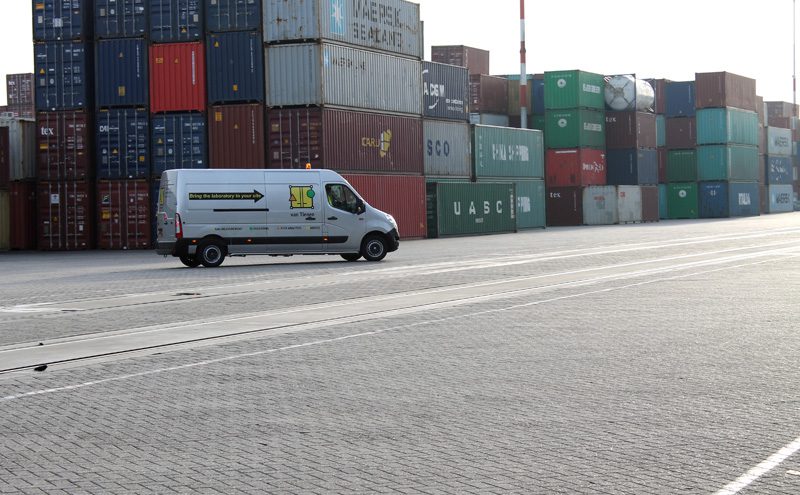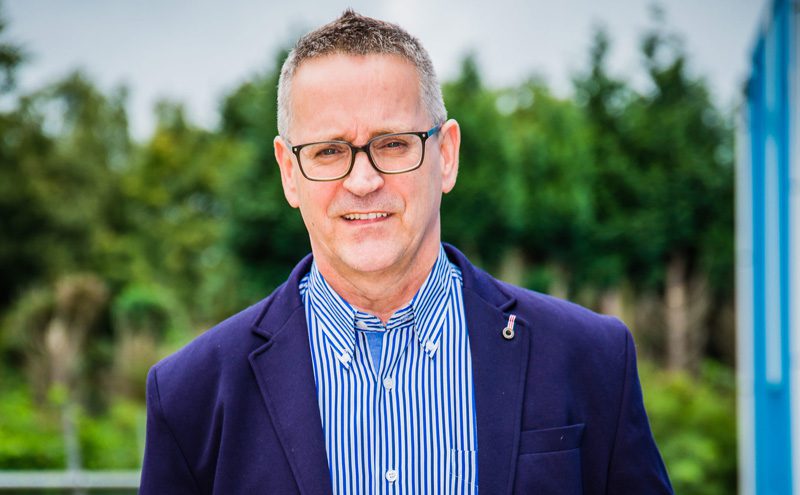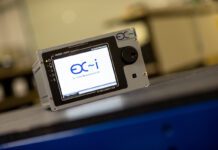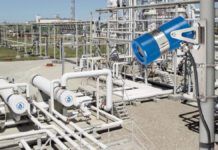
Toxic gas is said to be a threat presented by around 10% of freight containers. The problem for anyone opening or entering such containers is that they don’t know if it is safe to do so. The following case study article from gas monitoring specialist Gasmet looks at a company in the Netherlands which has been eploying an advanced gas detection technology capable of detecting hundreds of potentially hazardous gases, dramatically reducing the risks associated with fumigants and off-gases from goods and packing materials.
After a career as a customs officer in the Netherlands, Wim van Tienen was well aware of the toxic gas hazards presented by some freight containers, so in 2009 he started a company, Van Tienen Milieuadvies B.V., offering gas analysis and safety advice. The company grew quickly and now employs 23 staff. Wim attributes a large part of this success to the advanced FTIR gas detection and analysis technology upon which the company’s services depend.
Background
It has been estimated that there are more than 17 million shipping containers in the world, and at any time about one third of them are on ships, trucks, and trains. Over a single year, the total number of container trips has been estimated to be around 200 million.
The air quality inside containers varies enormously, depending on the goods, the packing materials, transit time, temperature, humidity and the possible presence of fumigants. Consequently, many containers contain dangerous levels of toxic gases and represent a major threat to port and transport workers, customs officials, warehousemen, store employees and consumers. It is therefore essential that risks are assessed effectively before entry is permitted.
Solvent vapours and most fumigants, whilst harmful, can be detected by the human nose, but Wim says: “Some gases are odourless and some have a high odour detection threshold, which means that you can only smell the substance in high concentrations; ethylene oxide for example, is commonly used as a sterilant in relation to medical devices. It is extremely toxic and has a low TLV limit of 0,5 ppm. However the odour threshold limit of ethylene oxide is 500 ppm, so detection with instrumentation is essential.”
The wide variety of potential contaminants represents a technological challenge to those responsible for testing, because if testers seek to detect specific gases, they risk failing to detect other compounds. It is also not practical to test every single container, so logical procedures must be established in order to minimise risks.
Gas detection and measurement
In 2009, when Wim first established the company, container gas detection was carried out with traditional field measurement techniques (gas detection sensors and tubes). “This approach was complicated, costly and time-consuming, and it was impossible to cover all risks,” he says. “With sensors and tubes, only a limited number of compounds can be measured specifically. Furthermore, the accuracy of detection tubes is poor and they can suffer from cross-sensitive reactions by interfering substances.

“Technologies such as PID-detectors respond to a wide variety of organic compounds, but they are not selective and unable to detect commonly found substances with high ionisation potentials such as 1,2-dichloroethane and formaldehyde.” Wim does not, therefore, believe that traditional measurement techniques are the best approach for covering all risks. “In order to test for the most common gases, it would be necessary to utilise a large number of tubes for every container, but this would still risk failing to detect other compounds and would be very expensive,” he warns.
It is possible to speciate organic compounds when using a gas chromatograph, but the number of compounds that can be tested is limited, and the use of a GC necessitates frequent calibration with expensive standard gases.”
Simultaneous multigas analysis
As a result of the problems associated with traditional gas detection techniques, Wim was keen to find an alternative technology and in 2013 he became aware of portable FTIR multigas analyzers from the Finnish company Gasmet Technologies. “The Gasmet DX4040 appeared to be the answer to our prayers,” Wim says. “The instrument is able to both detect and measure hundreds of compounds simultaneously; with this technique all inventoried high risk substances, such as ethylene oxide and formaldehyde, are always measured in real-time.
“With the help of Peter Broersma from Gasmet’s distributor Reaktie, a special library of over 300 gases was developed for our container monitoring application, and 8 Gasmet DX4040 FTIR instruments are now employed by our team of gas testing specialists.”
The major advantage of the Gasmet FTIR analyzers is the simultaneous multigas analysis capability. However Wim says: “Our testing work is now much faster, efficient and cost-effective, not least because the analyzers are small, lightweight, relatively simple to run, and no calibration is required other than a quick daily zero check with Nitrogen.”
Van Tienen Milieuadvies also employs a fully trained and highly qualified chemist, Tim Gielen, who is able to conduct in-depth analysis of recorded FTIR spectra when necessary. This may involve comparing results with Nist reference spectra for over 5000 compounds.
Most of the gases that are detected and measured by FTIR analyzers are cargo related. Wim says: “Off-gassing during shipment is the greatest problem, producing VOCs such as Toluene, Xylenes, MEK, 1,2 dichloroethane, blowing agents such as isopentane, and butanes from the packing materials and products.
“Formaldehyde, which evaporates from glued pallets, is most commonly found. On the other hand, less frequently found fumigants, such as sulfuryl difluoride and hydrogen cyanide are also always monitored with our FTIR analyzers.”
Container management
The need for container gas testing is driven by employers’ duty of care for employees, which is embedded in international health and safety regulations. Companies receiving containers must investigate whether employees that open or enter containers, may be exposed to the dangers of suffocation, intoxication, poisoning, fire or explosion. In order for employers to protect staff from these hazards, a risk assessment is necessary, coupled with an effective plan to categorise and monitor container flows. “This is how we develop an effective testing strategy,“ Wim explains. “If a flow of containers from the same source containing the same goods and packing materials is found to be safe, the number of containers being tested within that flow can be reduced. Similarly, if toxic gases are identified regularly in a container flow, the frequency of testing will be increased.”
Once a container has been found to contain toxic levels of a gas or gases, it is necessary for that container to be ‘de-gassed’ which is a service that Van Tienen Milieuadvies provides. The process involves fitting a powerful ventilator to the door and capturing the gases with activated carbon. Once degassing is complete, it is important that the container is unloaded promptly, because the gases involved will re-accumulate quickly in a closed container, resulting in the need for repeat testing.
With the benefit of many years of experience, Wim estimates that around 10% of containers contain toxic gases. “This means that hundreds of thousands of containers are travelling the world, representing a major risk to anyone that might enter or open them, so it is vital that effective testing strategies are in place wherever that risk exists.”
“FTIR gas analysis has benefited this work enormously. For us, the main advantages are speed and peace of mind – we are now able to test more containers per day, and by testing for such a large number of target compounds, we are able to dramatically lower the risks to staff. The speed with which we are now able to test containers, coupled with the negligible requirement for service, calibration and consumables, means that the ongoing cost of monitoring is minimal.
“Van Tienen combines the Gasmet DX4040 measurements with risk analysis, which provides the best protection for staff responsible for opening containers. We have LRQA certification for the procedures that we have developed to demonstrate compliance with occupational health and safety legislation.
“Risk analysis provides cost reduction for our clients, due to the fact that measurement frequencies in safe flows can be reduced significantly. Root cause analysis is also part of our risk analysis.”
Looking forward Wim believes that the use of Gasmet FTIR will expand rapidly around the world as the risks associated with containers become better understood, and as employers become more aware of the advantages of the technology.






